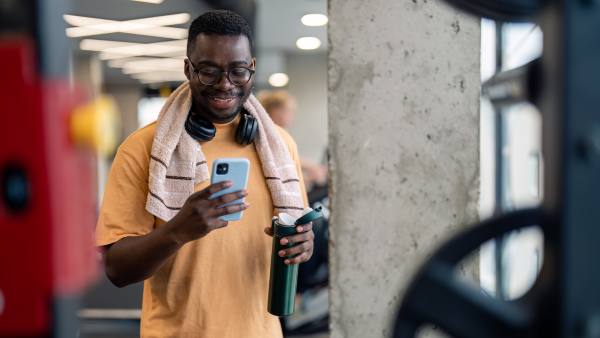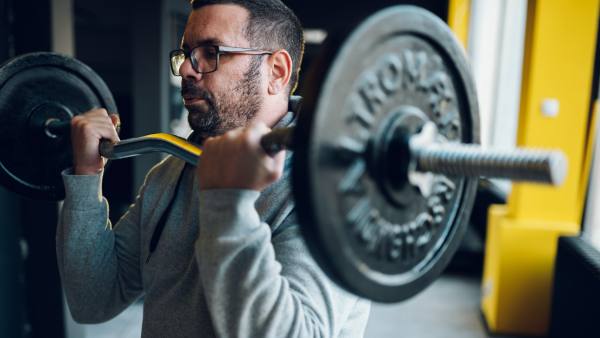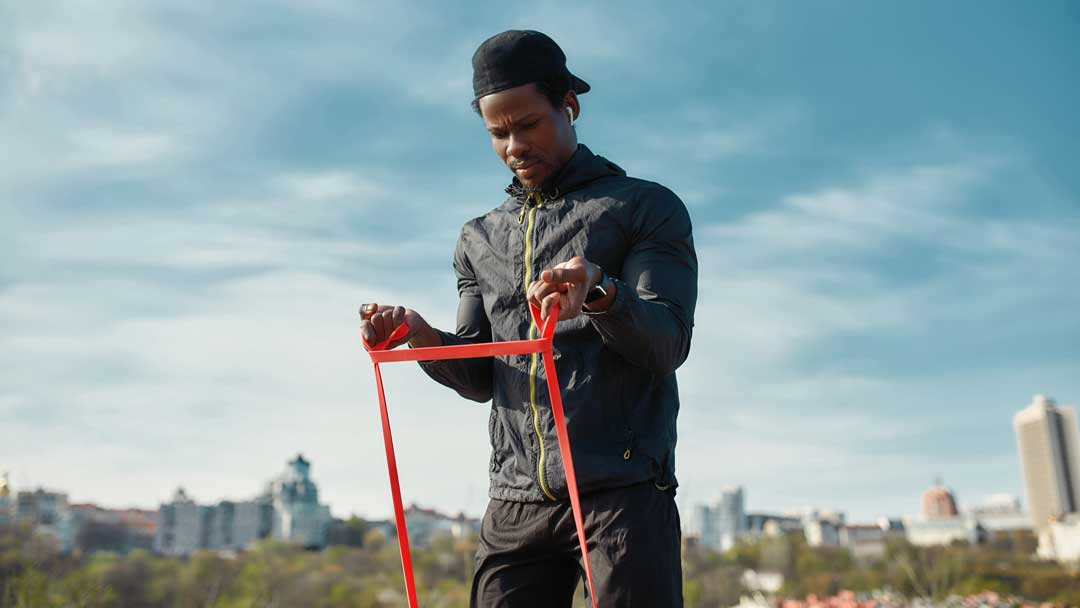Gyms and fitness clubs today are filled with high-tech, odd-looking equipment that can make a first-time experience somewhat intimidating. As a beginner starting at the gym for the first time, you might worry that people will judge you due to your size, shape, or lack of experience.
In my experience working in the fitness space for over 18 years, most people are happy to support you wherever you’re at. Besides, most people at the gym are too busy focusing on their workouts to notice what you’re doing.
Here are a few basic tips to start building confidence at the gym as a beginner.
What to wear to the gym
The best type of gym clothing is anything you find comfortable that allows you to move freely and fits your budget. Clothing made from quick-dry material with lots of stretch will keep you drier and more comfortable than cotton. The goal is to stay cool and comfortable as you work up a sweat.
The basic gym essentials are:
- A t-shirt or tank
- Shorts or joggers
- Exercise socks
- Cross training shoes
If new shoes are in your budget, cross trainers are better than running shoes for gym use because they help prevent injuries. While runners are designed for maximum cushioning to absorb impact when running, cross trainers provide foot and ankle stability. They also offer a firm foundation when lifting weights, using non-treadmill cardio equipment, or performing any activities that require a quick change in direction.
What to bring to the gym

Simplicity should always come first. Never let the desire for “perfect” accessories stand in the way of getting to the gym. That said, you’ll be better equipped to enjoy your time at the gym with a few helpful items.
Water bottle
Pretty self-explanatory, but staying hydrated is essential when working out. Bring a full water bottle and make sure you drink between exercises.
Something to keep track of your workout
Bring a small notebook or use your phone’s note app to follow your workout plan and keep track of your exercise stats. Write down how much weight you’re lifting and the number of sets/reps you complete—over time, you’ll see how much stronger you’ve become and feel more motivated to keep working out.
Wireless headphones
Bring a pair of headphones to the gym if you like listening to music or podcasts during your workout. Wireless headphones have the added convenience of not having to contend with a wire while working up a sweat. Sports headphones, although not necessary, are resistant to sweat and are designed to stay put as you exercise.
Towel
A small towel is nice to lie on the equipment and to wick up your sweat. Even though most gyms require you to spray off the equipment and wipe it down after each use, it’s still nice to lie on your own towel.
What to do when you’re at the gym

Always start with a warm-up
Whether you’re a beginner or a seasoned professional, warming up will prepare you mentally and reduce your risk of injury by increasing blood flow to and loosening up your muscles.
Start with 5-10 minutes of light cardio on your machine of choice. The elliptical or rowing machines are great options since they use both your upper and lower body. Your intensity should be a 3-4 out of 10, which you can gauge by noticing that your body temperature is starting to rise and you can hold an easy conversation.
After cardio, do 5 minutes of dynamic bodyweight exercises to increase blood flow to your joints, develop mobility, and prepare you for resistance training. Squats, walking lunges, and arm circles will take your limbs through their full range of motion.
Do a full-body workout
Your body’s basic functional movement patterns are squat, hinge, lunge, push, pull, and carry. Do 1 to 2 exercises per movement pattern to strengthen your whole body.
Designing a workout plan can be an overwhelming task. Many resources are out there claiming to be the ideal program. Start with a program focusing on your entire body, not just specific body parts on different days. You can progress to that type of workout program after you’re more comfortable at the gym.
Online resources, primarily videos demonstrating form, are your best friend when learning new exercises.
This is a great beginner full-body workout routine:
A good starting point for beginners is to do 10-12 reps (repetitions) in 3 sets. Using bicep curls as an example, you’ll do 10-12 bicep curls, then put the weights down. That’s 1 set. After you’ve rested for a minute, repeat the process 2 more times to complete a total of 3 sets.
Machines can be a helpful starting point for beginners because they are designed to guide proper form while reducing the risk of injury. When you feel more confident, try adding a few free weights exercises (like kettlebells, dumbbells or a barbell). Free weights work better for strengthening your core and balance.
If free weights are entirely new to you, first practice the exercises with only your body weight (using no weights or equipment) to learn proper form, then add weight once you have a feel for the movements.
Your workout should feel like a challenge, so increase the weight as you get stronger. This is where it’s helpful to have your notebook or phone to record where you’re at and to track your progress.
Here are some beginner workout videos I put together for Club 16 Trevor Linden Fitness:
How much time to spend at the gym
An ideal week at the gym for a beginner consists of 3 x 60-minute full-body workouts with at least 1 day of active rest between each gym day.
Schedule your gym time for Monday-Wednesday-Friday, Tuesday-Thursday-Saturday, or a similar combo of alternating days. If you can’t make 60 minutes work, aim for 45 instead. Even 20 minutes of exercise is better than skipping a workout.
On non-gym days, give your body the time it needs to rest and rebuild muscle. An active rest day will include low-intensity movement, such as walking, yoga, or biking, and can help with muscle soreness.
Remember to drink water and eat nutritious foods

Nutrition and hydration are too often overlooked. Without addressing these crucial components, you won’t be able to reach your full potential at the gym. Increasing weight, building muscle, and powering through a workout is easier when you’re hydrated with energy from healthy food.
Pre-workout
Fuel your body with a light meal that includes carbs and protein about 1-2 hours before heading to the gym.
Post-workout
Eat more protein and carbs 30-60 minutes after your workout to replenish lost glycogen and repair your growing muscles.
And don’t forget to drink lots of water! Keep a water bottle close so you can consistently drink water before, during, and after a workout.
Remember, everyone has to start somewhere. Going to the gym might seem daunting initially, but you’ll be surprised how quickly that feeling fades. Especially once you notice your body getting stronger and daily tasks feeling easier.
Do you have any helpful tips for beginners? Share in the comments below!





Starting at the gym can feel overwhelming, but consistency is key! Begin with basic compound exercises, focus on proper form, and don’t skip warm-ups. Also, having a simple workout plan and gradually increasing intensity helps build confidence. Stay patient, and progress will come! 💪🔥